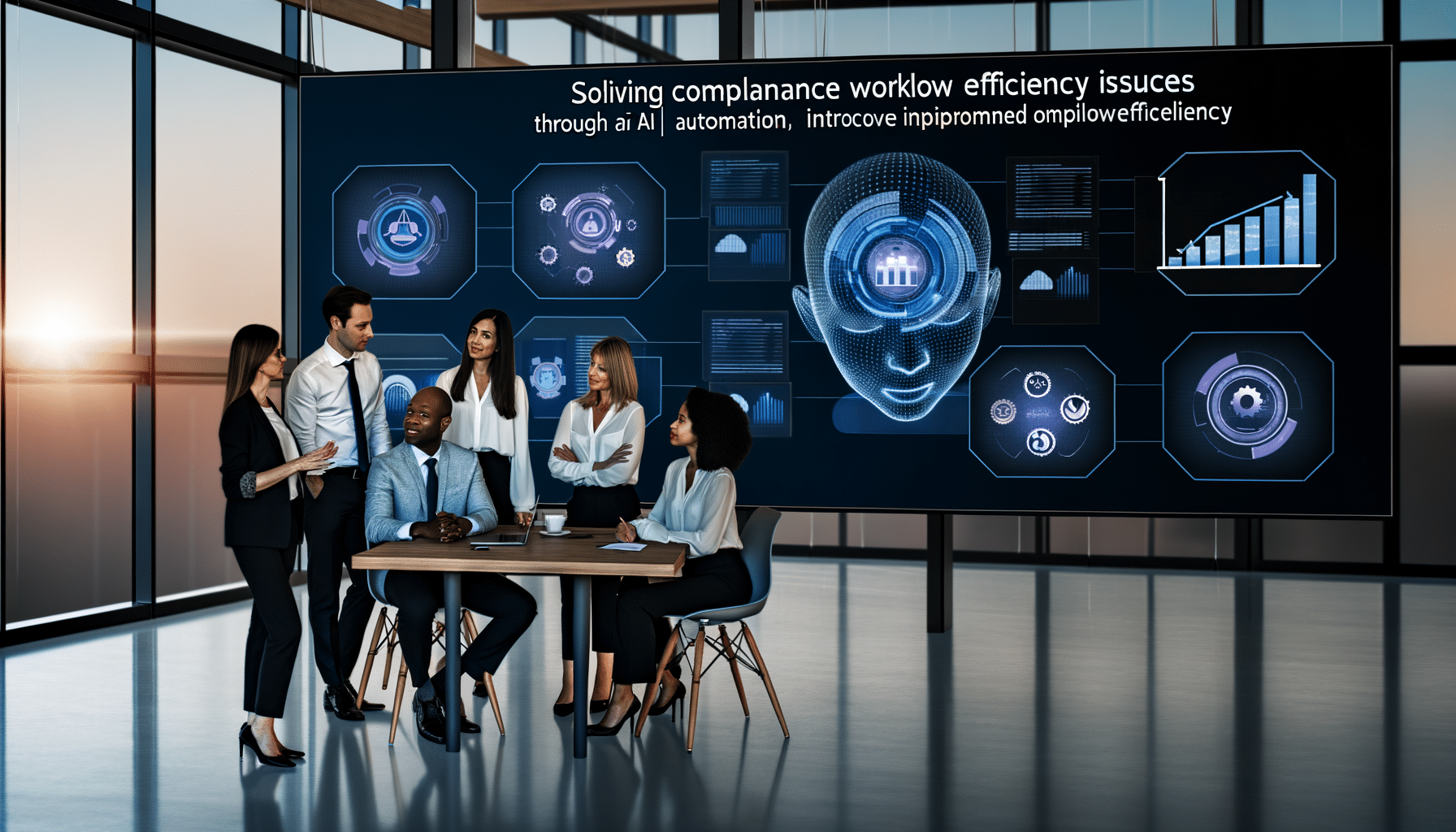- Workflow
- November 16, 2024
Automated Compliance Workflow Design

Revolutionizing Compliance Workflow through Automation: A Guide
As someone who has spent years delving into the intricacies of record management, I’ve seen firsthand how the traditional approaches simply aren’t cutting it anymore. By leveraging modern technology, businesses can not only comply with regulatory standards but transform their compliance workflow into a robust competitive advantage. In this blog, I explore how automation can streamline compliance processes, focusing on how it can simplify your life while enhancing your operations.
The Growing Necessity for Automated Compliance Workflow
Compliance has always been a legal obligation, but its complexity has skyrocketed over recent years. Today, organizations face a myriad of regulations such as GDPR, HIPAA, and SOX, each with their own set of requirements. As stakes grow ever higher, efficient compliance workflow isn’t just a tick-box exercise—it’s central to risk management and trust-building with stakeholders.
Automation in compliance workflow essentially acts as a lifeline. It minimizes human error, speeds up processing, and helps integrate compliance seamlessly into the organization’s daily activities. What’s more, it allows compliance to evolve from a reactive afterthought to a proactive, strategic function.
How Automation Transforms Compliance Workflow
I’m always amazed by the power of automation, as it can take over the labor-intensive parts of compliance workflow, allowing your team to focus on strategic decision-making. Here’s how it impacts various facets of compliance:
- Risk Assessment: Automated tools assess risks in real-time and generate insights, enabling quick action on potential threats.
- Monitoring Activities: Real-time monitoring facilitated by AI algorithms ensures no compliance breach goes unnoticed, offering peace of mind to stakeholders.
- Documentation: Automatically generate and organize documentation which is crucial during audits, making the workflow more efficient.
- Policy Management: Automation aids in enforcing data retention and deletion policies, keeping you updated with the latest regulations without breaking a sweat.
- Audit Trails: Maintain impeccable audit trails and logs that are securely stored and easily retrievable, significantly easing audit burdens.
Strategic Implementation of Automation in Compliance
Beyond the procedures, the strategic deployment of automation technologies in compliance workflow design can significantly impact effectiveness. Here are some essential steps to follow:
Research and Select the Right Tools
The first crucial step is selecting compliant automation tools. Not all solutions will fit all industries, so taking time to research and implement tools that align with your specific standards and processes is essential. Choose solutions that offer adaptable configurations to meet your evolving compliance needs.
Design a Scalable Compliance Framework
Create a scalable workflow that can adapt to organizational growth and evolving regulations. An effective compliance framework should incorporate flexibility without compromising on regulatory obligations.
Migrate Gradually and Train Your Team
Transitioning to an automated workflow should be gradual to ensure team adaptation and minimize disruptions. Offer comprehensive training for your staff to maximize the benefits of new technologies. Continued education ensures everyone stays on top of evolving compliance requirements while feeling empowered by the technology rather than overwhelmed.
In Conclusion: Embracing the Future of Compliance
Through strategic automation, compliance doesn’t have to be a daunting task. Integrating these solutions into your workflow can lead to reduced costs, minimized risks, and enhanced trust, all of which are necessary for growth in today’s dynamic business environment.
If this excites you and you wish to stay ahead of compliance mandates efficiently, I’m here to guide you through modern solutions that align with your goals. Reach out to learn more or dive deeper into the possibilities offered by our advanced record management solutions at RecordsKeeper.AI. Subscribe for more insights as I continue to explore how technology is framing the future of business operations.
Toshendra Sharma is the visionary founder and CEO of RecordsKeeper.AI, spearheading the fusion of AI and blockchain to redefine enterprise record management. With a groundbreaking approach to solving complex business challenges, Toshendra combines deep expertise in blockchain and artificial intelligence with an acute understanding of enterprise compliance and security needs.
Related Posts

Solving Compliance Workflow Efficiency Issues
Improving compliance workflow efficiency with AI automation.
- November 16, 2024

Solving Compliance Workflow Bottlenecks
Eliminating compliance workflow bottlenecks with AI automation.
- November 16, 2024
Archives
- January 2025
- December 2024
- November 2024
- October 2024
- September 2024
- August 2024
- July 2024
- June 2024
- May 2024
- April 2024
- March 2024
- February 2024
- January 2024
- December 2023
- November 2023
- October 2023
- September 2023
- August 2023
- July 2023
- June 2023
- May 2023
- April 2023
- March 2023
- February 2023
- January 2023
- December 2022
- November 2022
- October 2022
- September 2022
Want to get more content like this?
Signup to directly get this type of content to your inbox!!
Latest Post
Document Control for Equipment Maintenance
- January 20, 2025
Managing Records for Multiple Clients
- January 19, 2025
Handling Conference Documentation
- January 18, 2025
Setting Up Department Record Reviews
- January 17, 2025





